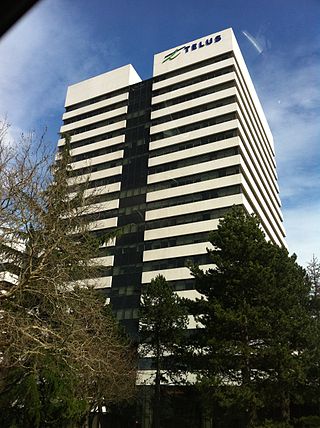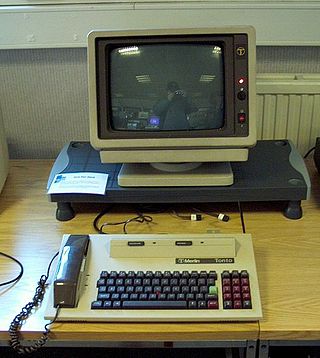Major historical collections
The earliest records held by BT Archives are those of the Electric Telegraph Company from 1846. Other private telegraph companies whose records are held are the British Electric Telegraph Company, International Telegraph Company, Submarine Telegraph Company, Electric and International Telegraph Company, British and Irish Magnetic Telegraph Company, London District Telegraph Company, United Kingdom Electric Telegraph Company, Universal Private Telegraph Company, Eastern Telegraph Company, British Telegraph Company, Irish Submarine Telegraph Company, English and Irish Magnetic Telegraph Company and the Anglo-American Telegraph Company. BT Archives also holds documents relating to the UK telegraph service of the British Post Office; the private companies being brought under the control of the Post Office in 1870.
BT Archives also holds records of the private telephone companies and of the Post Office telephone services. The private telephone companies represented are the Telephone Company Limited (Bell's Patents), Edison Telephone Company of London Limited, United Telephone Company, Lancashire and Cheshire Telephonic Exchange Company Limited, Northern District Telephone Company, National Telephone Company, Western Counties and South Wales Telephone Company, Corporation of Glasgow Telephone Department and London and Globe Telephone Maintenance Company.
Post Office Telecommunications activities continue concurrently and subsequently to the private telegraph and telephone companies. These are documented in the records of the Post Office telegraph and telephone service 1864-1969 and the Post Office Corporation (Telecommunications division) 1969-1981.
From 1 October 1981, British Telecommunications, trading as British Telecom, severed its links with the Post Office and became a totally separate public corporation. Records of British Telecommunications (public corporation) are held from 1981 until privatisation in 1984. Records after privatisation, of British Telecommunications plc 1984-2001, and of BT Group plc from 2001, continue to be preserved and made available for researchers in line with BT's heritage policy.
The British Phone Book collection is a major resource for genealogy and family history, containing a near-complete set of United Kingdom telephone directories from the first one issued in 1880. For preservation reasons the phone books are generally accessed on microfilm, and the phone books 1880-1984 are digitised and have been made available online.
BT Archives cares for more than 500,000 images and 1,000 film titles. Selected images can be found on BT Archives online image gallery.
BT Group plc is a British multinational telecommunications holding company headquartered in London, England. It has operations in around 180 countries and is the largest provider of fixed-line, broadband and mobile services in the UK, and also provides subscription television and IT services.

Communications in Gibraltar comprise a wide range of telephony systems, Internet access, broadcasting and satellite control. There is also printed and online media. Regulation of telecommunications and broadcasting are the responsibility of the Gibraltar Regulatory Authority (GRA), established by means of the Gibraltar Regulatory Authority Act in 2000.
The Isle of Man has an extensive communications infrastructure consisting of telephone cables, submarine cables, and an array of television and mobile phone transmitters and towers.
Telecommunications in the Philippines are well-developed due to the presence of modern infrastructure facilities. The industry was deregulated in 1995 when President Fidel Ramos signed Republic Act No. 7925. This law opened the sector to more private players and improved the provision of telecom services are better and fairer rates, leading to the creation of many telecommunication service providers for mobile, fixed-line, Internet and other services.
Telecommunications in the United Kingdom have evolved from the early days of the telegraph to modern fibre broadband and high-speed 5G networks.
The General Electric Company (GEC) was a major British industrial conglomerate involved in consumer and defence electronics, communications, and engineering.

Telus Communications Inc. (TCI) is the wholly owned principal subsidiary of Telus Corporation, a Canadian national telecommunications company that provides a wide range of telecommunications products and services including internet access, voice, entertainment, healthcare, video, smart home automation and IPTV television. The company is based in the Vancouver, British Columbia, area; it was originally based in Edmonton, Alberta, before its merger with BC Tel in 1999. Telus' wireless division, Telus Mobility, offers UMTS, and LTE-based mobile phone networks. Telus is the incumbent local exchange carrier in British Columbia and Alberta. Its primary competitors are Rogers Communications and Bell Canada. Telus is a member of the British Columbia Technology Industry Association.

The red telephone box is a telephone kiosk for a public telephone designed by Sir Giles Gilbert Scott, the architect responsible for Liverpool Cathedral.

Bell Canada is a Canadian telecommunications company headquartered at 1 Carrefour Alexander-Graham-Bell in the borough of Verdun, Quebec, in Canada. It is an ILEC in the provinces of Ontario and Quebec; as such, it was a founding member of the Stentor Alliance. It is also a CLEC for enterprise customers in the western provinces.

Kingsway telephone exchange was a Cold War-era hardened telephone exchange underneath High Holborn in London. Initially built as a deep-level air-raid shelter in the early 1940s, it was instead used as a government communications centre. In 1949 the General Post Office (GPO) took over the building, and in 1956 it became the UK termination point for TAT-1, the first transatlantic telephone cable. Closure of the facility began in the 1980s. It was built together with underground exchanges in Birmingham and Manchester, and was originally covered by a D-Notice.

Mercury Communications was a national telephone company in the United Kingdom, formed in 1981 as a subsidiary of Cable & Wireless, to challenge the then-monopoly of British Telecom (BT). Although it proved only moderately successful at challenging BT's dominance, it led the way for new communication companies to attempt the same.
A postal, telegraph, and telephone service is a government agency responsible for postal mail, telegraph, and telephone services. Such monopolies existed in many countries, though not in North America, Japan or Spain. Many PTTs have been partially or completely privatised in recent years, though a few, such as Posta ve Telgraf Teşkilatı of Turkey, Myanma Posts and Telecommunications of Myanmar and Tusass of Greenland, continue to remain wholly government-owned. In many of said privatisations, the privatised corporation was completely renamed, such as KPN in the Netherlands, Orange S.A. in France, BT Group in the United Kingdom, Eir in the Republic of Ireland, Swisscom in Switzerland, Telstra in Australia, Spark in New Zealand, Proximus Group in Belgium, A1 Telekom Austria Group in Austria, TDC Group in Denmark, Telia Company in Sweden and Finland, Telenor in Norway, Chunghwa Telecom in Taiwan and Singtel in Singapore; whereas in others, the name of the privatised corporation has been only slightly modified, such as Telkom Indonesia in Indonesia, Telekom Malaysia in Malaysia, Deutsche Telekom in Germany, Kosovo Telecom in Kosovo, KT in South Korea, Post Luxembourg in Luxembourg and Síminn in Iceland.

The One Per Desk, or OPD, was a British innovative hybrid personal computer and telecommunications terminal based on the hardware of the Sinclair QL. The One Per Desk was built by International Computers Limited (ICL) and launched in the United Kingdom in 1984. It was the result of a collaborative project between ICL, Sinclair Research and British Telecom, begun in 1983, which originally intended to incorporate Sinclair's flat-screen CRT technology.
Manx Telecom Ltd. is the primary provider of broadband and telecommunications on the Isle of Man. It is owned by Basalt Infrastructure Partners LLP.

The Bell System was a system of telecommunication companies, led by the Bell Telephone Company and later by the American Telephone and Telegraph Company (AT&T), that dominated the telephone services industry in North America for over 100 years from its creation in 1877 until its antitrust breakup in 1983. The system of companies was often colloquially called Ma Bell, as it held a vertical monopoly over telecommunication products and services in most areas of the United States and Canada. At the time of the breakup of the Bell System in the early 1980s, it had assets of $150 billion and employed over one million people.

The General Post Office (GPO) was the state postal system and telecommunications carrier of the United Kingdom until 1969. Established in England in the 17th century, the GPO was a state monopoly covering the dispatch of items from a specific sender to a specific receiver ; it was overseen by a Government minister, the Postmaster General. Over time its remit was extended to Scotland and Ireland, and across parts of the British Empire.
Cable & Wireless Communications Ltd operating as C&W Communications is a telecommunications company which has operations in the Caribbean and Central America. It is owned by Liberty Latin America and is headquartered in Denver, Colorado, US.
Gibtelecom is the largest telecommunications provider in the British overseas territory of Gibraltar. Its headquarters is located on John Mackintosh Square.

The KX series of telephone boxes in the United Kingdom was introduced by BT in 1985. Following the privatisation of BT in 1984, the company decided to create a newly designed and improved take on the British telephone box, which at this point consisted of only red telephone boxes which BT had recently acquired, the most common being the iconic K6 box. These red boxes were considered flawed in parts by BT for several reasons, including cost, lack of ventilation, accessibility and maintenance. BT announced the £160 million series of new boxes, the KX series designed by GKN, as well as announcing the eventual replacement of all existing telephone boxes. The main telephone box in the KX range is the KX100. Upon launch, there were five models in total. The boxes were produced at a rate of 5,000 a year, with the total count of all BT-owned kiosks reaching 137,000 by 1999, a number which has since decreased by more than seventy per cent.











